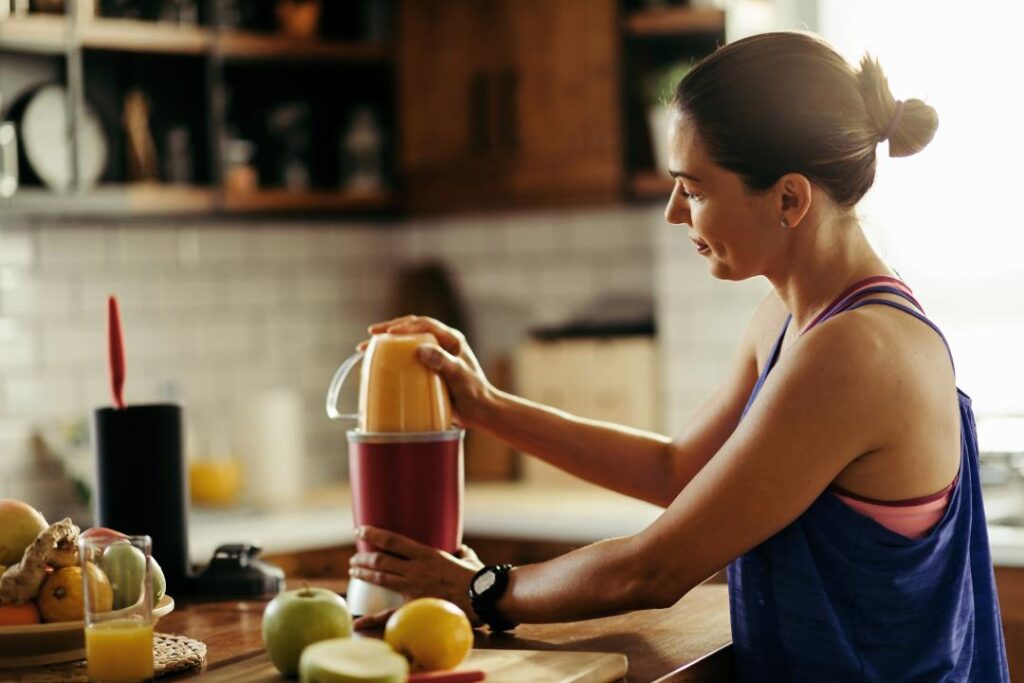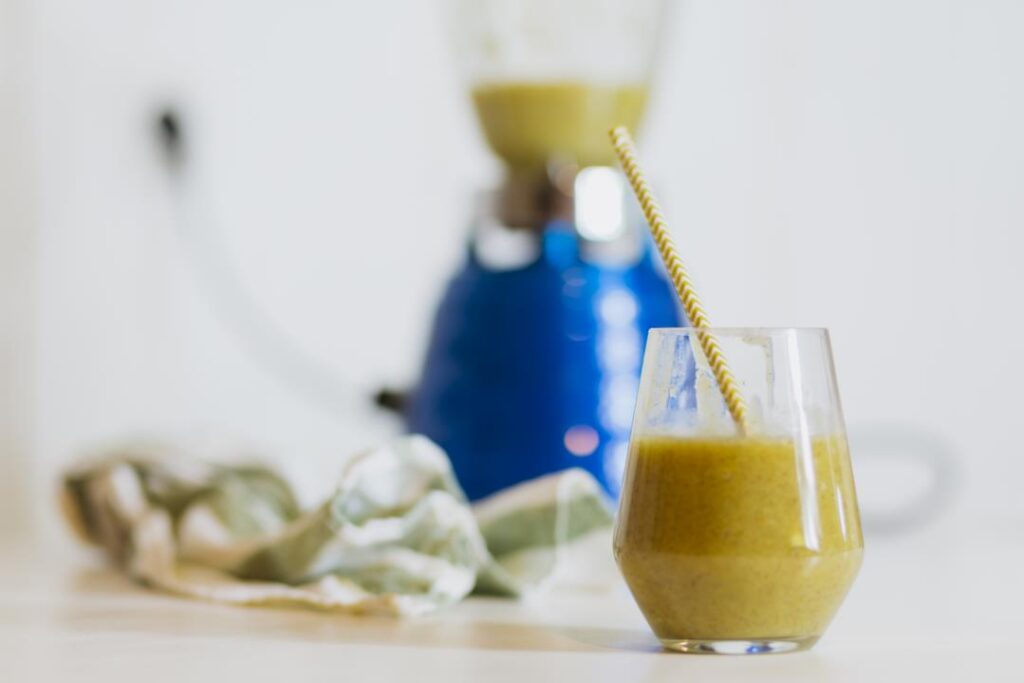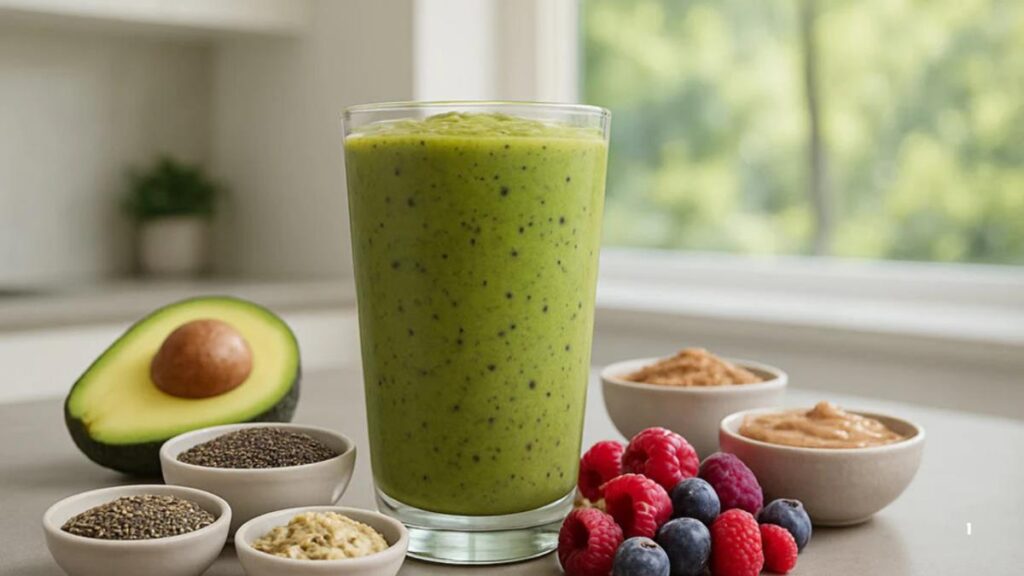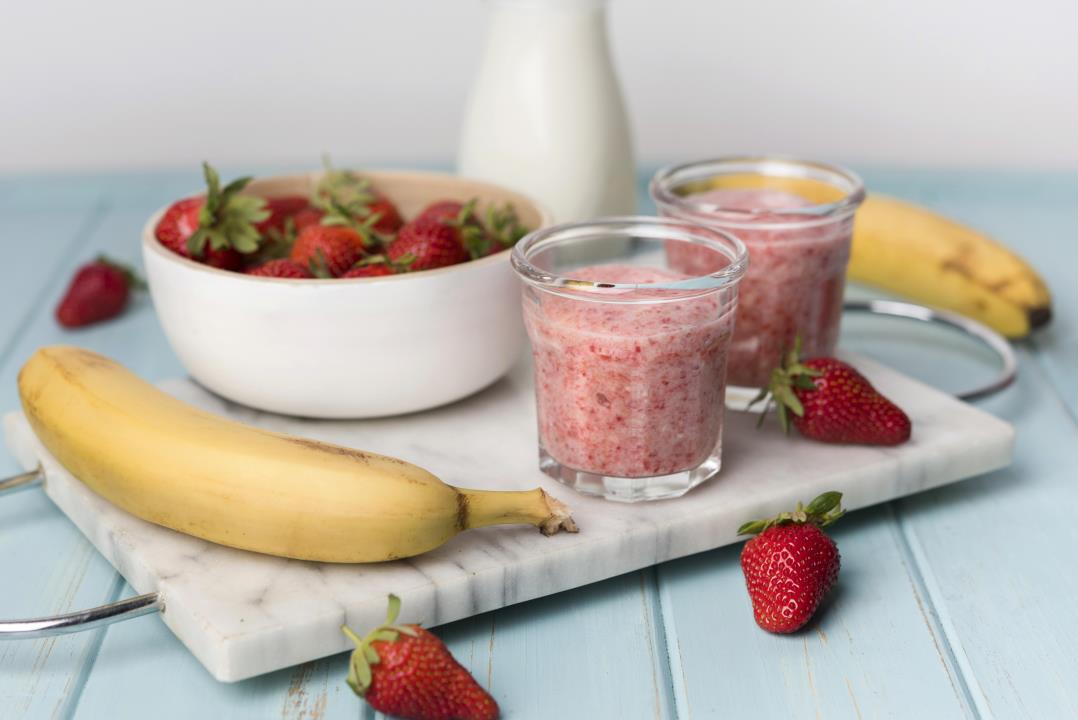Managing diabetes doesn’t have to mean giving up delicious cooling treats. Fruit smoothies, when prepared inconveniencing some slight care, can truly be a terrific and health choice for diabetics. Use combinations of fruits that have a low glycemic index, good saturated fats, and what we call fiber-containing Goodies-An-Add-In, while refraining from adding any sugar. Just these choices will enhance easy levels of blood sugar, together with really great flavor and nutrition.
Whether you require a quick breakfast, pre-workout snack, or “guilt-free” dessert, a diabetic-friendly smoothie will slide right into your way of life. When well balanced and consumed in smart amounts, smoothies do help keep your energy underway, suppress sugar cravings, and begin to improve diet quality. I will show you the best ingredients for smoothies, methods to prepare them safely, and tasty recipes that won’t cause blood sugar spikes.
Table of Contents
ToggleWhy Can Smoothies Be Good for Diabetics (Provided They’re Done Right)

Smoothies can seem to be a sugar trap for any diabetic; however, with careful preparation, they can promote stable blood sugar levels along with good health. Putting together slow-acting, low-glycemic fruits such as berries or green apples, they do not cause glucose spikes. Fiber-containing ingredients that slow down the absorption of particulate further-whatever it might be: chia seeds, flaxseeds, or leafy greens. Healthy fats from nut butters, seeds, or avocado help provide a lasting sensation of fullness and balance energy.
Top Diabetic-Friendly Ingredients for Smoothies
Berries, spinach, chia seeds, and avocado help control blood sugar naturally. Use unsweetened almond milk, Greek yogurt, and protein powder for balance and fullness.
| Ingredient Type | Examples | Benefits for Diabetics |
| Low-Glycemic Fruits | Berries (blueberries, strawberries), kiwi | Rich in antioxidants and fiber, it won’t spike blood sugar |
| Leafy Greens | Spinach, kale | Low-carb and nutrient-dense; improves overall health |
| Protein Sources | Greek yogurt, protein powder (unsweetened) | Helps stabilize blood sugar and keeps you full longer |
| Healthy Fats | Avocado, chia seeds, flaxseeds | Slows glucose absorption; promotes heart health |
| Liquid Base | Unsweetened almond milk, coconut water | Low in carbs and calories, hydrating without added sugars |
| Natural Sweeteners (Optional) | Stevia, monk fruit | Diabetic-safe alternatives to sugar don’t affect glucose levels |
Tips and Tricks to Blender Blood Sugar-Friendly Smoothies
Portion control: Excesses, no matter the healthy ingredient, can spike blood sugar.
Prefer fruits with low to medium glycemic indices: Berries are a fine example here. Try to keep out of excessive use of bananas and mangoes.
Add fiber and protein: Fiber and protein generally provide a sense of fullness while slowing digestion, which can otherwise cause a quick spike.
Avoiding fruit juice or added sweeteners: Use only whole fruits and unsweetened liquids. Carb counting: Should consist of 15-30 grams of total carbohydrates.
5 Easy and Healthy Fruit Smoothie Recipes for People with Diabetes

Living with diabetes may very well give the impression that a fruit smoothie is off-limits, not worth consideration, or outright rejected. Smart ingredient choices go a long way in making delicious yet diabetes-friendly smoothies. These five easy recipes will help maintain blood sugar level stability and supply you with the necessary fiber, protein, and healthy fats.
Low-glycemic fruits such as berries, green apples, and avocado are combined with health-promoting ones, including Greek yogurt, chia seeds, and unsweetened nut milk. Since these smoothies are easy to prepare, they are perfect for busy mornings or an enjoyable mid-afternoon pick-me-up snack. They can also be changed depending on your liking or what you have in the fridge.
Berry & Chia Energy Smoothie
- ½cup almond milk, unsweetened
- ½cup blueberries (fresh or frozen)
- ½cup strawberries
- 1 tbsp chia seeds
- ¼ avocado
- A few ice cubes
Green Kiwi-Spinach Smoothie
- 1 cup fresh spinach
- 1 kiwi, peeled
- ½ cucumber
- ½ cup Greek yogurt, plain, non-fat
- ½ cup water or unsweetened coconut water
- 1 tsp flaxseeds
Strawberry Protein Smoothie
- ¾ cup strawberries
- ½ banana (optional for taste and texture)
- 1 scoop protein powder, unsweetened
- ½ cup almond milk, unsweetened
- 1 tsp stevia or monk fruit (optional)
- Ice cubes
Blueberry Almond Smoothie
- ½ cup frozen blueberries
- 1 tbsp almond butter
- ½ cup plain Greek yogurt
- ½ cup water or almond milk, unsweetened
- ½ tsp cinnamon
Avocado & Berry Balance Smoothie
- ½ avocado
- ½ cup raspberries
- ½ cup almond milk, unsweetened
- 1 tbsp chia seeds
- Juice of ½ lemon
- 1 tsp monk fruit (optional)
Best Times to Drink Smoothies If You Have Diabetes

To evade a sudden rise in your blood sugar, you have to drink your smoothie at the right time:
With breakfast: Add your smoothie with a boiled egg or whole grain toast, so that the carbs from the smoothie would be balanced with the protein.
Post-workout: After the sport, the body becomes more efficient in making use of natural sugars.
As a snack: Just be sure to keep your smoothie portion small – this can be a clever energizer for your mid-morning or afternoon.
What to Avoid in Diabetic Smoothies
Some of the ingredients of the smoothie may cause it to be unsafe for diabetics. Here is a list of what you should not use:
- Fruit juices (high sugar content)
- Sweetened yogurts
- Ice cream or sherbet
- Honey, agave, or maple syrup
- Store-bought smoothie mixes
Keep with whole, natural foods and always be on the lookout for hidden sugars in the nutritional labels.
How to Alter Your Favorite Smoothie Recipes for More Flavor, Texture, and Nutrition

This is to say, smoothies are perhaps the easiest and most flexible recipes to tweak according to taste, health goals, and ingredient availability. Whether you want to build protein, cut down on the sugar, or just experiment with flavor, these adjustments will transform your average smoothie. First, decide on your requirements: is it energy, weight loss, muscle gain, or digestion? To clean up the protein a little, add Greek yogurt, protein powders, cottage cheese, or nut butter. To lessen the sugar amounts, swap those tropical fruits like mangoes and pineapples for low-sugar berries, avocados, or cucumbers.
If the smoothie is too thick or hard to blend, just add more liquid; your best bets are unsweetened almond milk, oat milk, coconut water, or plain old water! To make it thicker and creamier, use frozen bananas, avocado, or yogurt instead. For natural sweetness, you can add dates, honey, or maple syrup instead of processed sugar. Use superfoods such as chia seeds, flaxseeds, oats, and even a few leaves of spinach or kale to bump up the fiber and vitamins without affecting the flavor. Try spicing it up with a bit of cinnamon, turmeric, or ginger to keep things interesting and benefit your health, too.
Diabetic Smoothie Mistakes to Avoid
- Healthy smoothies can also become a problem. The usual mistakes are:
- Excess fruit: ½–1 cup of fruit is the safest quantity for a smoothie.
- Leaving out protein or fat: Causes sugar spikes and hunger shortly after.
- Forgetting to check ingredients: Always make sure that yogurts, plant-based milks, and protein powders do not carry hidden sugars.
- Consuming too quickly: Drinking slowly will also prevent blood glucose levels from rising abruptly.
Benefits of Smoothies for Diabetics
- A properly made diabetic smoothie can be a source of many advantages:
- Improve fruit and vegetable intake
- Increase satiety and reduce snacking.
- Offer essential vitamins and minerals
- Help control the cravings in a balanced manner.
- Give energy without sugar from processed sources.
Storage and Meal Prep Tips
- Fresh is best when it comes to smoothies, however, you can make ahead to save time:
- Portion and freeze in advance.
- Store in glass jars in the fridge for up to 24 hours.
- Mix well before drinking if made in advance.
- Do not keep your smoothie for too long, as the nutrients will be lost.
Wrapping up
Adding fruit smoothies to a diabetic diet can be fun, but with purpose-oriented nutrients, they provide an added benefit. Low in sugars with a decent amount of fiber, protein, and healthy fats, the recipes satisfy the sweet tooth without harming the person at all. The recipes should provide you with choices that fit your taste, along with blood sugar management.
Keep in mind: even healthy smoothies cannot be consumed on an unlimited scale, and whether your smoothies are healthy or not, they complement a well-balanced meal. Monitor your blood sugar response so that you can make changes to recipes if necessary. Meanwhile, many tasty diabetic smoothie recipes already provide many opportunities to be included in everyday life. It is about combining the right ingredients with a bit of creativity outside the box!
FAQs
What fruits are safe to use in smoothies for diabetics?
Diabetics are advised to consume berries (blueberries, raspberries, strawberries), kiwi, green apple, and citrus with a low glycemic index that results in low blood sugar elevation. These fruits have a low impact on blood sugar and are rich in fiber and antioxidants. Use them in moderation and avoid high-sugar fruits such as mango and grapes in large quantities.
Can I drink smoothies every day if I have diabetes?
You can indeed have a daily smoothie, but it should be with protein, healthy fats, and fiber, and not mainly fruit. Stick towards the lower carbohydrates and think of it as a meal or snack, not something extra. Be aware of how your blood sugar changes and change ingredients if needed.
Is a banana okay in diabetic smoothies?
The usage of bananas should be in moderation preferably half a small banana, to not only improve the texture but also to sweeten. On the other hand, bananas have a higher sugar content than berries. To replace high-sugar ingredients, consider using avocado, zucchini, or frozen cauliflow,er which will provide creaminess without the need for added sugar.
Are store-bought smoothies okay for diabetics?
Most of the time, store-bought smoothies contain not only more sugars but also fruit juices and other ingredients that are high in carbs, which are not diabetic-friendly. Carefully check all nutrition labels. Usually, it’s healthier and safer to prepare your smoothie at home because you can control what goes into it.
What’s the ideal portion size for a diabetic-friendly smoothie?
The ideal serving size of a smoothie should be about 1 cup (8–10 oz), which should have no more than 30g of total carbs. Use the ingredients that are high in fiber and low in sugar, and do not consume smoothies along with a meal unless you adjust the other carbs accordingly.





